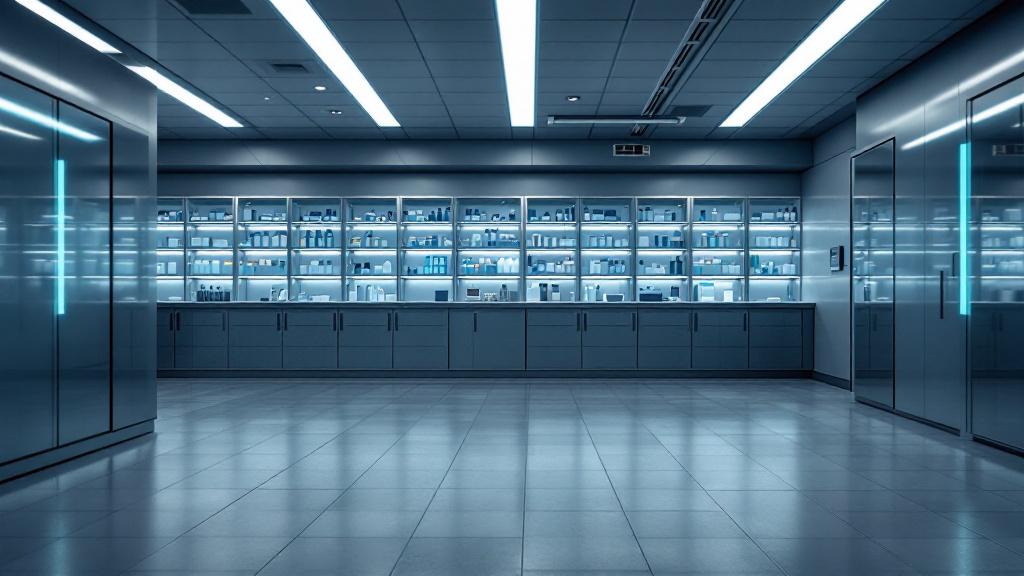Understanding Acid Metabolism
LSD, commonly referred to as acid, undergoes a complex metabolic process once ingested. Knowledge of how this substance is absorbed and distributed in the body is essential to understanding its effects and duration in the brain.

Absorption and Distribution
When ingested orally, LSD is absorbed through the gastrointestinal tract and then enters the bloodstream. Once in circulation, it is transported to the brain and other body organs. The absorption of LSD takes place quickly, and it is typically detectable in the bloodstream within 30 to 90 minutes after consumption.
Absorption Timeline for LSD:
Time After IngestionAbsorption Status0 - 30 minutesInitial absorption begins30 - 90 minutesPeak absorption occurring1 - 2 hoursLSD entering bloodstream
Despite common misconceptions, LSD does not enter the spinal cord after ingestion. It remains in the bloodstream and affects the brain and various organs, but it does not get stored in the spinal cord. Studies indicate that LSD has a half-life of three to four hours, meaning it is metabolized within 48 hours [1].
Duration in the Brain
LSD typically stays in the brain for about 20 minutes after absorption. However, the perceived effects can last much longer, primarily depending on the blood concentration of the drug. Once the initial effects wear off, users often report lingering sensations that may continue for hours.
Duration Overview:
Phase of LSD MetabolismDurationTime in brain~20 minutesTotal duration in bodyUp to 12 hoursOverall metabolism time~48 hours
The information surrounding LSD's effects is often clouded by myths. One of the significant misconceptions is that LSD remains in the spinal cord indefinitely. Research debunks this myth, confirming that LSD does not stay in the spinal cord for life or cause hallucinations following spinal cord injuries. Understanding these aspects of LSD metabolism helps clarify the relationship between acid and its physiological effects on the human body.
Detection of Acid
Understanding how LSD (acid) is detected in the body can clarify misconceptions about its duration and effects, especially regarding the question, does acid stay in your spinal cord?
Drug Testing for LSD
Various methods exist for detecting LSD and its metabolites in the body. Common drug testing techniques include urine tests, blood tests, and hair tests. Each method has different detection times and effectiveness.
Test TypeDetection WindowBlood Test6 to 12 hours after ingestionUrine TestUp to 4 days after ingestionHair TestUp to 90 days after ingestion
Ordinary drug tests often do not register LSD; however, specific tests can effectively identify it in the bloodstream and urine shortly after consumption. Research shows that LSD typically flushes out of the system within 24 to 48 hours, making it challenging to detect in standard screenings.
Factors Affecting Detection
Several factors influence the detection of LSD in the body. These include the individual's metabolism, the amount of LSD consumed, and the type of drug test employed. The liver metabolizes LSD rapidly, which is why detection is complicated compared to other drugs. Additionally, detection times vary:
These factors illustrate that while LSD might not stay in one’s spinal cord, its detection in bodily fluids remains complex and varies significantly. Understanding this helps dispel myths about the long-term effects of LSD and its biological persistence.
Debunking Myths
Understanding the misconceptions surrounding LSD, particularly regarding its presence in the spinal cord and the occurrence of flashbacks, is essential for informed discussions about the substance.
Spinal Cord Misconceptions
A prevalent myth is that LSD remains in the spinal cord indefinitely and can trigger hallucinogenic effects later, especially during physical injuries. However, this idea is scientifically unfounded. LSD does not enter the spinal cord after ingestion; it circulates in the bloodstream and mainly affects the brain and other organs. Research indicates that LSD has a half-life of three to four hours and does not remain in the body long-term [1].
Studies show that LSD can induce reversible electrophysiological modifications in the spinal cord. However, these changes are temporary, meaning the drug does not have lasting effects in that area. No evidence supports the idea that LSD stays in the spinal cord after its effects wear off [3].
MisconceptionTruthLSD stays in the spinal cord indefinitelyLSD does not enter the spinal cord and is rapidly metabolized and eliminated from the body.LSD causes permanent hallucinogenic effects during physical injuryLSD's effects are temporary and reversible; it does not remain in the spinal cord.
Flashbacks and LSD
The myth of flashbacks associated with LSD use has been widely discussed, yet evidence supporting this is limited. While the phenomenon called Hallucinogen Persisting Perception Disorder (HPPD) does exist, it is not accepted by scientists that stored drugs in the body, particularly the spinal column, cause these flashbacks. Instead, long-term LSD use may lead to perceptual changes that can last weeks or even months without a direct relation to the drug being present in the body [4].
Understanding this distinction is important for individuals considering the psychological and physical consequences of LSD usage. While flashbacks may be troubling, they are not indicative of the drug's lingering presence in the system.
MythRealityFlashbacks are caused by LSD remaining in the bodyFlashbacks may occur but are not linked to stored drugs. HPPD is a separate condition.Flashbacks are common for all LSD usersNot all users experience persistent flashbacks, and experiences vary widely.
Clearing up these myths can help foster a better understanding of LSD and its effects, guiding individuals in making informed decisions regarding its use. For further reading on related topics, consider exploring what is the hardest drug to quit? or why is mixing prescription drugs with alcohol dangerous?.
Acid Effects on the Body
Understanding the effects of acid, particularly LSD (lysergic acid diethylamide), on the body is crucial for both users and professionals in the field of addiction. The effects are classified into physical symptoms and impacts on the central nervous system.
Physical Symptoms
LSD can lead to a variety of physical symptoms that can affect individuals during and after ingestion. Below is a summary of these physical effects:
SymptomDescriptionDilated PupilsIncreased size of the pupilsBody Temperature ChangesFluctuations in body temperatureSweatingIncreased perspirationLoss of AppetiteDecreased desire to eatSleep DisturbancesDifficulty in falling asleep or staying asleepDry MouthDecreased saliva productionTremorsInvoluntary muscle contractionsCardiovascular ChangesIncreased heart rate (tachycardia), elevated blood pressure, and palpitations
These physical effects typically last for up to 12 hours after ingestion. It's essential to be aware of these symptoms and their potential implications on health NCBI.
Central Nervous System Impact
The central nervous system (CNS) is significantly affected by LSD, leading to various psychological effects. These include:
The impact on the CNS can lead to disruptions in normal functioning, and users may find it challenging to differentiate between reality and hallucination. Moreover, flashbacks can occur even long after drug use, potentially leading to recurring traumatic experiences triggered by stress or fatigue [5]. Such flashbacks can result in panic attacks and a severe sense of disorientation.
For more information on how substances such as LSD intersect with addiction and mental health, consider exploring related topics like the impact of alcohol on the body or the psychological effects of drugs.
Therapeutic Potential of LSD
Lysergic acid diethylamide (LSD) has gained attention for its potential therapeutic applications. Research suggests that it may offer various medical benefits, particularly in the fields of mental health and addiction treatment.
Medical Uses and Benefits
LSD has shown promise in several therapeutic settings. Its uses extend beyond recreational purposes and include:
Notably, LSD has been successfully utilized in the treatment of drug and alcohol dependence. This includes its role in psychedelic peak therapy, which has shown effectiveness for terminally ill patients seeking to cope with their conditions.
Medical UseDescriptionAntianxiety ManagementAlleviates anxiety symptomsCreativity EnhancementBoosts creative thinkingSuggestibility EnhancementIncreases suggestibility in therapyPerformance EnhancementImproves task performanceDrug Dependence TreatmentAssists in overcoming alcohol or drug addiction
LSD-Assisted Psychotherapy
Clinical trials have highlighted the potential of LSD-assisted psychotherapy in reducing anxiety, particularly for patients facing terminal illnesses. This form of therapy provides patients with a controlled psychedelic experience, allowing them to explore their thoughts and feelings in ways that traditional therapy may not facilitate.
In LSD-assisted psychotherapy, therapists guide patients through their experiences, helping them process difficult emotions related to their conditions. This method has shown to be effective in reducing existential distress and promoting emotional healing.
For individuals seeking to understand more about the complexities of addiction, consider exploring topics such as what is the hardest drug to quit? or the difference between physical & psychological dependence.
Considerations for LSD Use
The potential for both therapeutic application and physical effects must be carefully considered when discussing LSD. Understanding dosage and the impact of LSD on the body can provide valuable insights for those who might be exploring its use.
Dosage and Physical Effects
LSD, also known as acid, can produce varying effects based on the dosage administered. The dosage required to elicit a moderate effect in most subjects is approximately 1–3 µg/kg body weight. It is crucial to be aware of the physical symptoms that can arise from its use. Common physical effects include:
Physical EffectsDescriptionDilated pupilsEnlarged pupils which can affect visionTemperature changesHigher or lower body temperatureSweating or chillsFluctuations in body temperatureLoss of appetiteReduced interest in foodSleeplessnessDifficulty in falling or staying asleepDry mouthReduced saliva productionTremorsInvoluntary shakingSympathetic nervous system effectsInclude hypothermia, tachycardia, palpitations, high blood pressure, and hyperglycemia
The impact of LSD extends to the central nervous system, leading to increased reflex activity, tremors, and muscular incoordination, which should be taken into account when considering its use.
Therapeutic Applications
LSD has garnered interest for its potential therapeutic benefits. It has been explored for various medical uses, including management of anxiety, enhancement of creativity, and to assist in performance enhancement. Notably, LSD has shown promise in treatments for drug and alcohol dependence, along with its application in psychedelic peak therapy for terminally ill patients.
Clinical trials highlighted the effectiveness of LSD-assisted psychotherapy in reducing anxiety linked to terminal diseases. One particular study involving patients reported a positive trend in reduced trait anxiety during a 2-month follow-up, with the benefits lasting for up to 12 months after treatment. This underlines the necessity of administering LSD safely within a controlled environment [5].
Furthermore, research indicates that LSD may have neuroprotective effects that mitigate some harmful consequences of spinal cord injury (SCI). By inhibiting oxidative stress and factors like lipid peroxidation, LSD shows potential in protecting and even reversing some of the adverse effects caused by SCI [1].
Understanding the nuances of dosage and therapeutic applications can significantly enhance the knowledge surrounding LSD and its impact on users. For further exploration into the implications of substance use, see our articles on related topics like can beer cause gout? and what is the hardest drug to quit?.
References
[2]:
[3]:
[4]:
[5]:

.svg)

.svg)

.svg)
.svg)









































































































